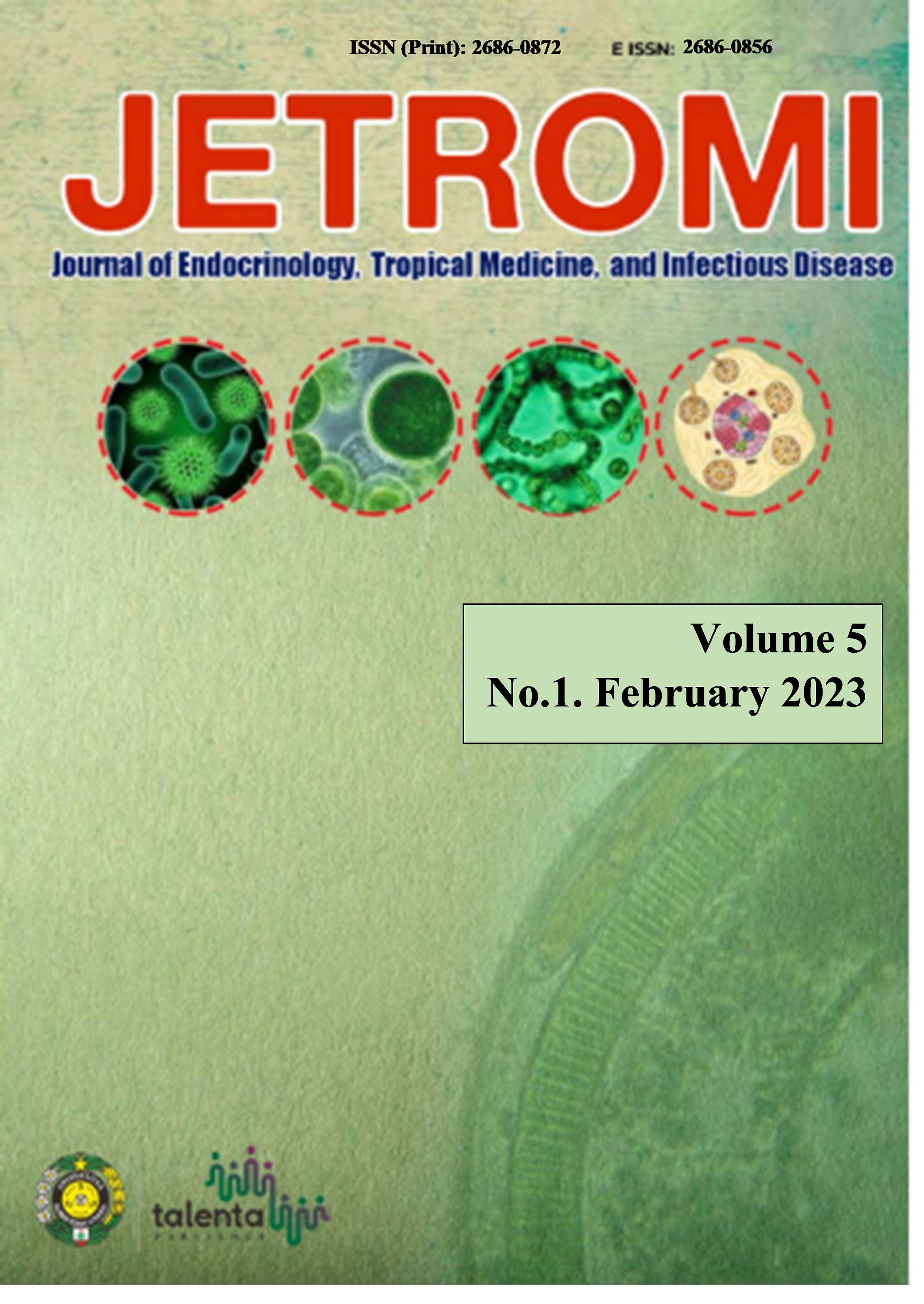Inflammatory Mediators as Predictors of Improved Functional Capacity after Phase 2 Cardiac Rehabilitation in Coronary Artery Bypass Surgery Patients
DOI:
https://doi.org/10.32734/jetromi.v5i1.12145Keywords:
Cardiac Rehabilition, Coronary Artery Disease, IL-6, hsCRP, Capacity FunctionalAbstract
Background: Inflammatory parameters correlate with the atherosclerotic acute coronary syndrome (ACS) process and can predict future cardiovascular events in healthy populations. Coronary heart disease (CHD) subjects who had undergone coronary artery bypass grafting (CABG) procedures and underwent cardiac rehabilitation must be prevented from increased cardiovascular events. The study aims to evaluate the effect of cardiac rehabilitation programs on marker inflammation of cardiovascular risk factors.
Method: This study was conducted at Departement Cardiology and Vascular Diseases Integrated Heart Center H. Adam Malik Hospital Medan who had undergone CABG procedures and underwent phase I and II cardiac rehabilitation. All subjects were carried out to collect basic patient data based on anamnesis, physical examination, results of laboratory tests, and functional capacity of the heart.
Result: The subjects of this study were male 26 (89.7%) subjects and female 3 (10.2%) subjects. The average BMI in this study was 26.4207±0.675 kg/m2, the most common CHD risk factor was smoking in 21 (72.4%) subjects, dyslipidemia in 20 (69%) subjects, hypertension in 18 (62.1%) subjects, obesity 14 (48.3%) subjects and T2DM 13 (44.8%) subjects. Based on echocardiography results, the average ejection fraction was 47.931±2.17 %, and 18 (62.1%) subjects had cardiomegaly. After undergoing phase I and II cardiac rehabilitation,  there was improved significantly of the 6-minute walk test to hsCRP, IL-6, neutrophil-lymphocyte ratio (NLR), and functional capacity (all, p <0.001). IL-6 value is correlated significantly with functional capacity improvement (p<0.05) in both phase I and II cardiac rehabilitation.
Conclusion: Cardiac rehabilitation (CR) should be considered as a preventive plan in the treatment of CHD patients. Physical exercise is noteworthy and they reduce morbidity and mortality due to reduced inflammation.
Downloads
Downloads
Published
Issue
Section
License
Copyright (c) 2023 Journal of Endocrinology, Tropical Medicine, and Infectious Disease (JETROMI)

This work is licensed under a Creative Commons Attribution-NonCommercial-ShareAlike 4.0 International License.
The Authors submitting a manuscript do so on the understanding that if accepted for publication, copyright of the article shall be assigned to Journal of Endocrinology, Tropical Medicine and Infectious Diseases (JETROMI).
Copyright encompasses exclusive rights to reproduce and deliver the article in all form and media. The reproduction of any part of this journal, its storage in databases and its transmission by any form or media, will be allowed only with a written permission from Journal of Endocrinology, Tropical Medicine and Infectious Diseases (JETROMI).








